Rehabilitation is a cornerstone of recovery after a Bony Bankart lesion, whether managed surgically or non‑operatively. A structured protocol protects healing tissues, restores motion, rebuilds strength, and guides a safe return to sport. This article outlines the phases of rehab, key exercises, and progression criteria.
1. Goals of Rehabilitation
- Protect surgical or natural healing during the early stages.
- Gradually restore full, pain‑free range of motion (ROM).
- Rebuild rotator cuff and scapular strength.
- Retrain proprioception and neuromuscular control.
- Establish clear criteria for return to high‑demand activities.
2. Phases of Rehab After Bony Bankart
Phase 1: Protection and Early Mobility (0–4 Weeks)
Primary Focus: Protect repair, minimize inflammation.
- Immobilization: Sling worn most of the day, removed for gentle exercises.
- Exercises:
- Pendulum exercises.
- Assisted forward flexion within safe limits.
- Scapular retraction and posture training.
- Avoid: External rotation beyond surgeon’s recommendation and sudden lifting.
Phase 2: Intermediate Range and Early Strength (4–10 Weeks)
Primary Focus: Regain controlled ROM, start light strengthening.
- Exercises:
- Active‑assisted ROM progressing to active ROM.
- Isometric external and internal rotation.
- Closed‑chain scapular exercises (wall slides, push‑ups plus).
- Progression Goals:
- Forward flexion to near full.
- Minimal pain with daily activities.
Phase 3: Advanced Strengthening (10–16 Weeks)
Primary Focus: Build strength, endurance, and neuromuscular control.
- Exercises:
- Progressive resistance bands or light weights.
- Side‑lying external rotation, rows, and prone horizontal abduction.
- Proprioceptive drills (body blade, rhythmic stabilization).
- Functional Training: Incorporate movements mimicking sport‑specific patterns at low intensity.
Phase 4: Return‑to‑Sport and Performance (16–24 Weeks)
Primary Focus: Restore power and dynamic stability for sport.
- Exercises:
- Plyometric drills (medicine ball toss, rebounder work).
- Sport‑specific throwing or overhead drills.
- Interval return programs for athletes (e.g., throwing progression for pitchers).
- Clearance Criteria:
- Symmetrical strength compared to opposite side.
- Full, pain‑free ROM.
- Successful completion of functional tests (e.g., closed‑kinetic upper extremity stability test).
3. Key Considerations for Return to Sport
- Timeframe: Typically 4–6 months for non‑contact sports, 6+ months for collision sports.
- Surgeon Input: Clearance based on clinical assessment and imaging if needed.
- Psychological Readiness: Confidence in shoulder stability is as important as physical metrics.
- Preventive Strategies: Ongoing maintenance exercises reduce recurrence risk.
4. Common Pitfalls to Avoid
- Advancing too quickly before tissues have healed.
- Neglecting scapular stabilization exercises.
- Ignoring subtle instability or pain during progressions.
- Skipping functional testing prior to return.
FAQs
1. How long should the sling be worn after surgery?
Typically for the first 3–4 weeks, with removal for exercises as advised by your surgeon.
2. When can strengthening begin?
Light isometric strengthening often starts around 4–6 weeks, progressing gradually thereafter.
3. What are examples of proprioceptive exercises?
Rhythmic stabilization drills, body blade use, and closed‑chain activities like weight‑bearing on a stability ball.
4. Is early return to sport ever recommended?
No. Returning too early risks re‑injury or failure of the repair.
5. How do therapists monitor progress?
Through regular strength testing, ROM measurements, functional movement assessments, and patient feedback.
Rehabilitation after a Bony Bankart lesion is a progressive, well‑structured journey. Each phase builds on the last, from protecting the shoulder to restoring power and control. By following evidence‑based protocols and clear return‑to‑sport guidelines, patients can achieve lasting stability and confidence in their shoulder.
